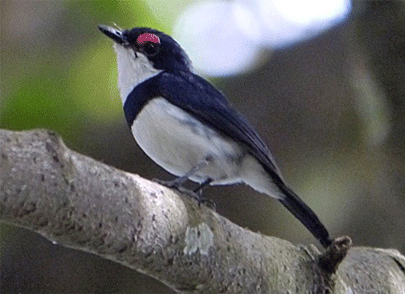A Little-Known Wattle-Eye
By Aghah Valery Binda
 |
|
Adult male banded wattle-eye. Photo credit: Borrow. |
The Banded Wattle-eye (Platysteira laticincta) is rare and little-known bird endemic to Cameroon, a globally threatened species, listed endangered in the IUCN Red List because of its very small and fragmented range, this bird is an indicator species for the human impacts on its montane forest habitat, and faced with imminent danger of extinction.
The Kilum-Ijim Forest in the Bamenda was designated as a global conservation priority due to the presence of the wattle-eye and the other rare endemic – the Bannerman’s turaco. The Kilum-Ijim happens to be the last bastion of the specie and the Kilum-Ijim Forest Project (KIFP) of BirdLife International started in 1987 and went on to be a conservation success in Cameroon.
Through this project, the size of the Kilum-Ijim Forest which was once estimated at 17,500 hectares in 1973 and later reduced to 10,50 hectares in 1983 has been restored to over 20,000 hectares. The Bamenda Highlands Forest Project (BHFP) came subsequently. These initiatives have created awareness to conserve the Banded wattle-eye within these sites.
The banded wattle-eye is portrayed in a traditional ‘Nokang’ dance by the local communities, and is called ‘Nokang koo’ which translates into ‘Nokang of the forest’. Much as the bird is small and less charismatic as compared to parrots and raptors, educating the public of its plight is an urgent conservation need. The enormous ecological roles played by such insectivorous birds, as well as the cultural value, deserves studies on the wattle-eye’s population dynamics and ecological requirements. However, in designing projects, we must ensure that we do not fall into the trap of documenting the status of the bird and monitoring it to extinction at the expense of conservation action.